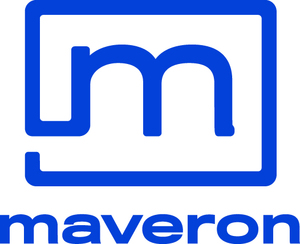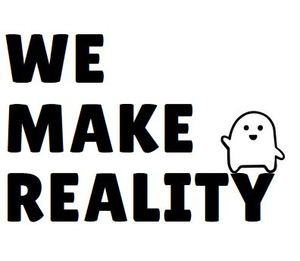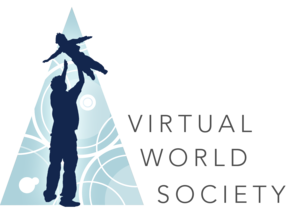Call for Participation
Building on the W3C Workshop on Web and Virtual Reality (VR) in 2016, and the W3C Workshop on VR Authoring in 2017, this is a proposal for a W3C Workshop on applying Inclusive Design to the development of Virtual and Augmented Reality (XR) standards for the Web.
XR gives us the opportunity to innovate and explore, and to create new and exciting experiences for consumers. It also presents us with the opportunity to innovate and explore ways to make sure that those experiences are new and exciting for everyone.
Recognizing recent discussions at the XR Access Symposium and the ongoing work underway in W3C as part of the Immersive Web Working and Community Groups and of the GPU for the Web Community Group, this workshop focuses on Web-based XR efforts.
Inclusive XR
Inclusive XR is XR that has been created with accessibility and Inclusive Design as a core component. One way to think of inclusive design principles is that Inclusive Design is about "putting people first":
It's about designing for the needs of people with permanent, temporary, situational, or changing disabilities - all of us really."
The terms "inclusion" and "inclusive design" are different parts of the same thing - the wish to include people, no matter who they are, where they come from, what they believe in, or what other characteristics make them human. Whereas inclusion is the broad cultural philosophy, inclusive design focuses on the technologies and design choices we make that underpin the goal of inclusion, and it is this that the Inclusive Design for Immersive Web Standards workshop aims to explore.
What is the purpose of this workshop?
The workshop seeks to achieve three key objectives:
- Share existing inclusive XR solutions that will help us create new standards for inclusive XR on the web.
- Identify accessibility gaps in existing web XR technologies, and consider solutions for closing those gaps.
- Explore ways to use existing technologies and standards to create innovative solutions for inclusive XR on the web.
Share existing solutions
- What standards already exist or are in development that may impact inclusive XR on the Web?
- What solutions are already being used to create inclusive XR on the web?
- What can we learn from other areas like location-based VR, gaming, and 360 video?
identify gaps
- What are the accessibility limitations of existing web XR technologies?
- How can we extend or supplement existing web XR technologies to enable more inclusive XR on the web?
Explore innovative solutions
- Could AI be used to provide real-time audio description or text captions?
- Could existing APIs be used to provide alternative modes of interaction (like the Vibration API for tactile feedback, the Gamepad API for alternative input devices)?
References
- Immersive Accessibility EU Project
- Progressing Towards an Accessible VR Experience, Jasmine Clark
- The Business Case for Digital Accessibility
- Game accessibility guidelines
- XR Access Symposium
Please submit a pull request or raise an issue on GitHub to suggest further workshop topics. You may also email Dominique Hazael-Massieux <dom@w3.org>.
Structure and topics
We expect the workshop to provide structure for the following activities:
-
Setting the scene of inclusive XR and providing a framework of knowledge on the topic
- XR content authoring
- XR platform development
- Accessibility mechanics and engineering
- Consumer need for Inclusive XR
- UX and Interaction Design for XR
- Specific privacy & security risks that XR may expose people with disabilities to
-
An unconference to facilitate exploration of the workshop goals, e.g. on the following themes
- Developing user requirements for inclusive XR on the Web;
- Developing use cases for inclusive XR on the Web;
- Identifying inclusive design gaps in existing Immersive Web technologies and standards;
- Identifying technical gaps in inclusive XR projects.
- Time for prototyping and developing ideas and solutions
How can I attend?
Attendance is free for all invited participants and is open to the public, whether or not W3C members.
If you wish to express interest in attending, please fill out the registration form. We want to fill the room with people with practical experience with inclusive XR opportunities and challenges, and with people involved in relevant Web technologies and their standardization.
Because the venue can only accommodate so many people, you must receive an acceptance email in order to attend. Also, be sure to keep an eye on these important dates.
On top of registration, we encourage you to suggest a specific topic for discussion at the workshop by submitting a position statement.
The W3C Workshop on Inclusive Design for Immersive Web Standards brings together a diverse set of specialists and consumers. The workshop includes specialists in XR (content authoring and platform development), user Experience (UX), Accessibility, and Interaction Design, as well as people with permanent, temporary, situational, and changing disabilities.
This workshop, as other W3C meetings, operates under its Code of Ethics and Professional Conduct.
How can I suggest a presentation?
This is a workshop, not a conference. Presentations will be short, with topics suggested by submissions and decided by the program committee. Our goal is to actively discuss topics, not to watch presentations.
In order to facilitate informed discussion, we encourage attendees to read the accepted topics prior to attending the workshop.
If you wish to present on a topic, you can send a position statement to the Program Committee at <group-inclusive-xr-pc@w3.org> by the deadline (see important dates). Our program committee will review the input provided, and select the most relevant topics and perspectives.
A good position statement should be a few paragraphs long and include:
- Your background on inclusive XR and/or relevant Web technologies;
- Which topic you would like to lead discussion on;
- Links to related supporting resources;
- Optionally, other topics you think the workshop should cover.
Position statements must be in English, preferably in HTML or plain-text format. Images should be included inline in HTML using base64-encoded data URIs. You may include multiple topics, but we ask that each person submit only a single coherent position statement. The position statement and the input provided at registration time (e.g. bio, goals, interests) will be published and linked to from this workshop page.
What is W3C?
W3C is a voluntary standards consortium that convenes companies and communities to help structure productive discussions around existing and emerging technologies, and offers a Royalty-Free patent framework for Web Recommendations. We focus primarily on client-side (browser) technologies, and also have a mature history of vocabulary (or “ontology”) development. W3C develops work based on the priorities of our members and our community.
Venue
The W3C Workshop on Inclusive Design for Immersive Web Standards is located at Fremont Foundry in Seattle, Washington, USA.
Fremont Foundry
154 North 35th St.
Seattle, WA 93103
USA
Program
Program Committee
Chair
- Leonie Watson, Tetralogical
Committee
- Judy Brewer, W3C
- Roland Dubois, independent
- Ian Hamilton, independent, core contributor to the Game Accessibility Guidelines
- Dominique Hazael-Massieux, W3C
- Thomas Logan, Equal Entry
- Ada Rose Cannon, Samsung
- Chris Wilson, Google





